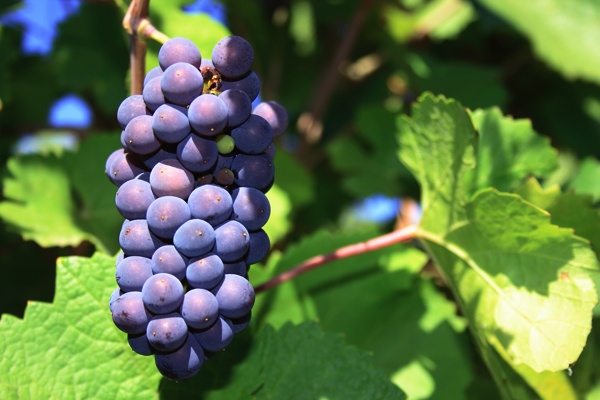Across ancient civilizations, from Mesopotamia to Greece, and Rome, into Medieval Europe, and beyond, wine has always been associated with the upper classes. Commoners drank beer and, in some areas, poorer-quality wines, often diluted with water.
Since its earliest consumption, wine has always carried a sense of elitism and exclusivity. A whole language exists around wine, that leaves novice drinkers at a disadvantage. If they don’t understand the implication of a terroir description, or the sensation that a certain quality of tannins will bring, they can feel (or be made to feel) that they haven’t fully understood the wine.
Anxious questions abound over how long wines should be kept, how to cellar them, how to remove corks correctly, what glassware to use, when to decant, and what temperature to serve wines. The customs around tasting wine are also baffling for many… the sniffing, swirling, aerating on the palate, and the dreaded cork evaluation.
Though the terminology, the rituals, and above all, the prices associated with fine wines have always set connoisseurs apart from the rest, their disdain for the everyday wine drinker seems, sadly, to be growing.
I used to work for the winery that makes Fat Bastard wines. In its heyday, Time Magazine hailed this mass-marketed brand from the Languedoc, “wine for the anti-snob”. What it was, and still is, is well-made, Vin de Pays, regional, varietal wines for your weeknight dinners and casual barbecues.
These wines, and many of their ilk, offer consumers something precious – consistency, availability, and affordability. If you taste the wine and enjoy it, the next bottling, the next vintage, will not disappoint. You will be able to find it in stores, and you can enjoy it without worrying about your stemware choice or wine swirling capabilities.
It seems a happy medium to me, that fine, terroir wines and uncomplicated value wines co-exist. Those who want to dig deep into how a special vineyard site shapes a wine, and how to best store, serve, and pair said wine, can develop the necessary expertise. Those who prefer to just drink a nice soft, fruity red should be able to do so without fear of reprisal.
And yet, time and again, I hear wine professionals disparaging these drinkers of “conventional wines”. When the term refers, as it technically should, to wines made from environmentally harmful vineyard and winery practices, these critical reactions are understandable. But, like many wine terms (reserve, old vines, natural…), the word conventional is being bandied about a little too widely today. Its definition has become as hazy as an unfiltered “real wine” made on a micro-négociant’s back porch.
For many in the trade, conventional has simply come to mean high volume wines. And big, for these arbiters of taste, is necessarily bad. Regardless of the fact that… many larger négociant wineries and cooperatives are leading the charge in sustainable winemaking in their regions, many of these more mass-produced wines have taste profiles that please a wide audience, and, in a time of rampant inflation where grocery prices are skyrocketing and simple pleasures like wine are becoming increasingly inaccessible, they offer real value.
Sure, these wines are rarely mesmerizing. They don’t have that intangible je ne sais quoi that makes the best terroir wines so distinctive, so that the memory of drinking them lingers with you many months after the bottle was drained.
On the flip side, they are rarely as terrible as the worst wines from certain of the lowest intervention, most vineyard focused growers… and they cost a fraction of the price.
Here are four easy drinking organic or sustainably produced wines, for your casual drinking pleasure. If you want to have fun with your wine aficionado friends, try decanting a simple, everyday wine and serving it to them in fancy glasses. Unbiased by a label, you never know how much they may find themselves enjoying it.
Fat Bastard Chardonnay IGP Pays d’Oc 2023, France
A smooth, rounded white wine, with balanced freshness, medium body, and exuberant citrus, pear, and tropical fruit flavours. Produced by an ISO 26000 (social responsibility gold standard) “exemplary” status winery.
![]()
Domaine Tariquet Côtes de Gascogne Classic 2023, France
A classic southwest white blend led by Gros Manseng, with zesty acidity, a lean, focused palate, and pleasant citrus and herbal flavours. 11% alcohol makes this a nice, lighter option.
![]()
Umani Ronchi Medoro, Marché IGT Sangiovese, Italy
Certified organic red wine from the Marché region of Italy, on the Adriatic coast. Boasts soft, plummy fruit, fresh acidity and subtle earthy undertones.
![]()
Juan Gil Vieilles Vignes Jumilla 2023, Spain
A bold, fleshy red wine with baked dark fruit, sweet spice, and underlying vanilla, cedar notes from brief oak ageing. Serve slightly chilled with heartier dishes. Certified organic.
![]()
(All wines are rated out of a possible five apples)







